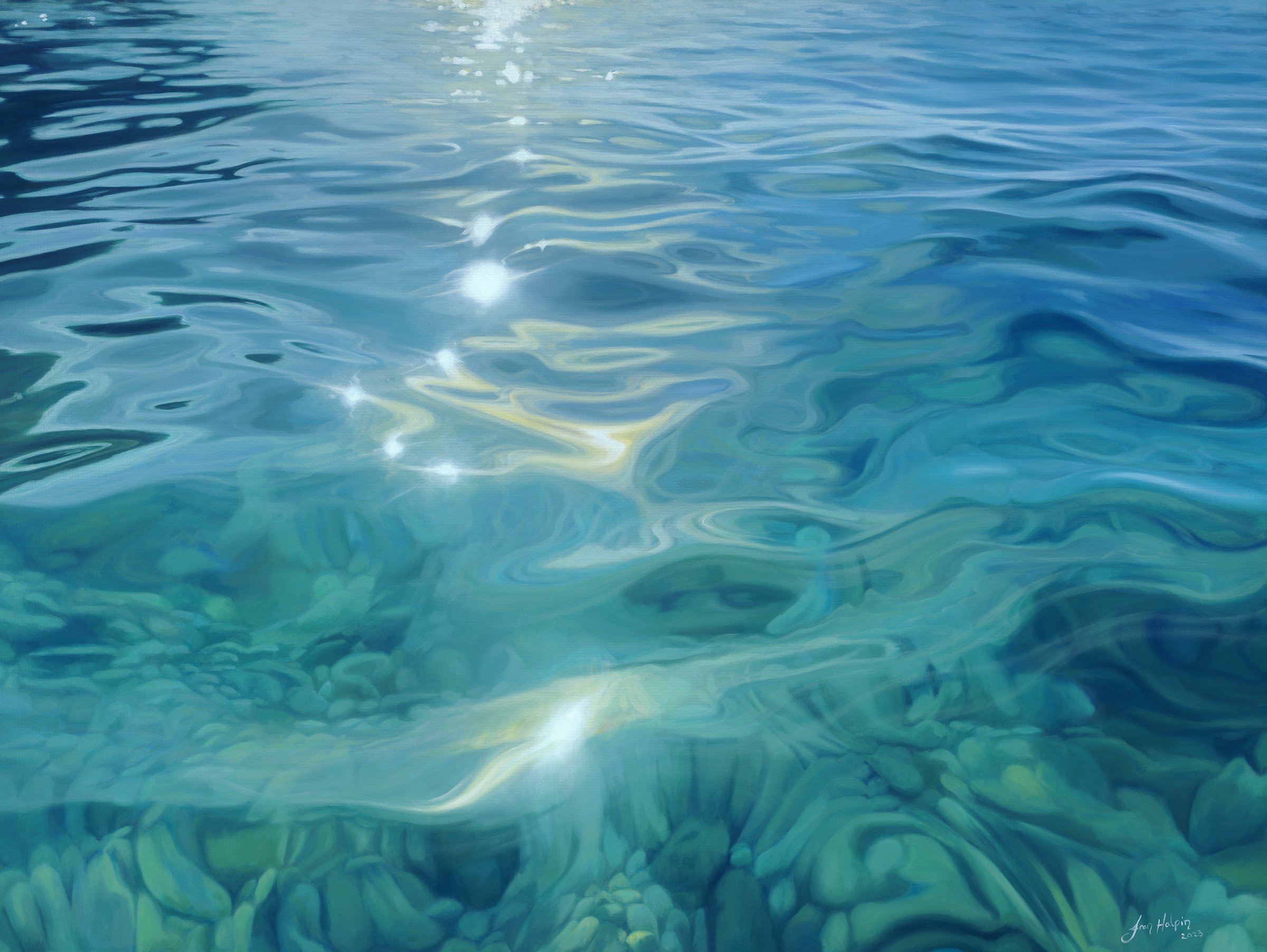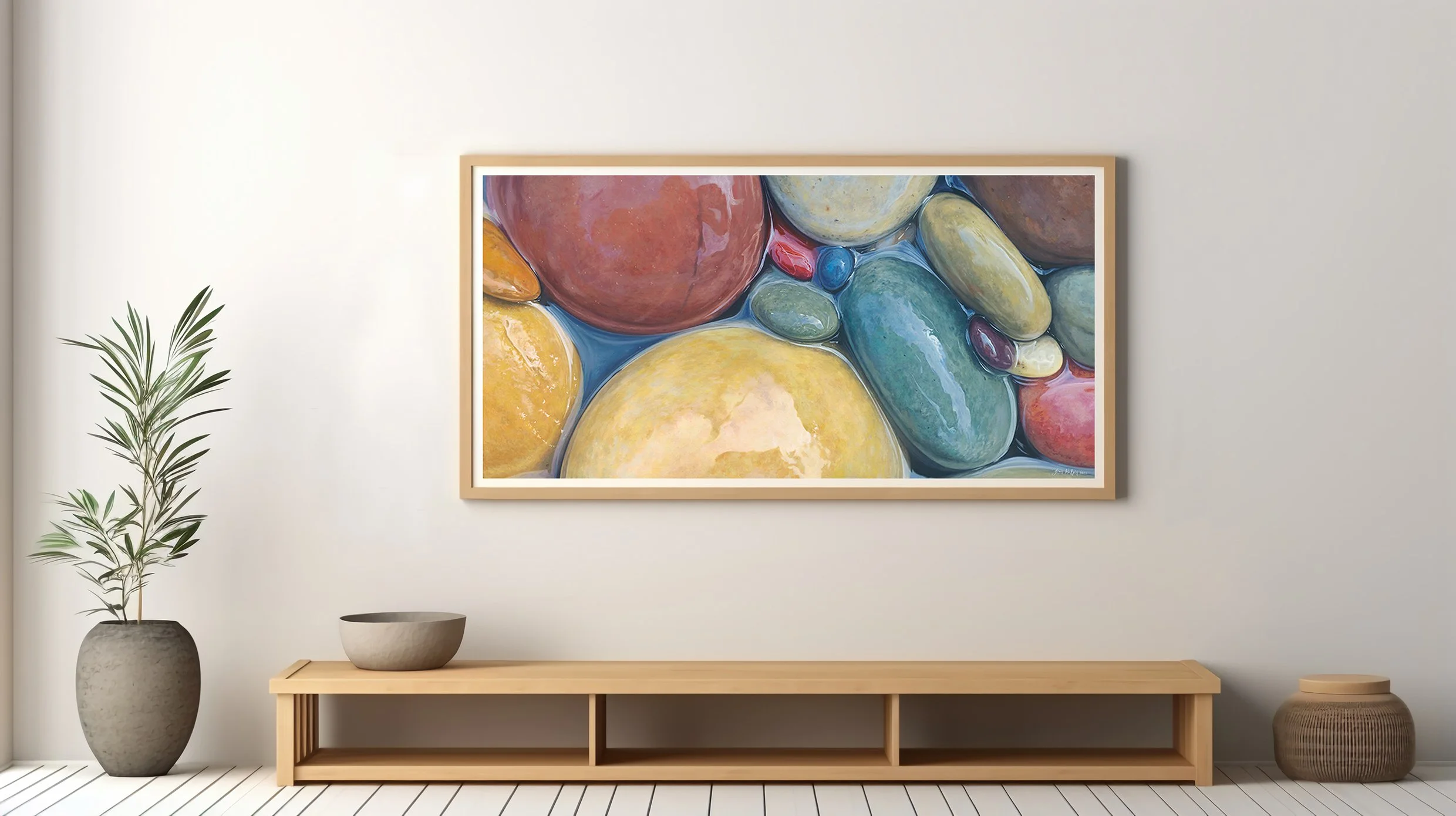My Painting Process - From Inspiration to Finished Piece
A lot of people ask me about my painting process and where I find my inspiration, so I thought I would write a post on it and hopefully inspire others.
The first artist I ever found that was working with pebbles was an artist called Ester Roy. She was creating these incredibly colourful paintings and drawings of pebbles. I totally fell in love with her work at the time. She was using the same camera angle that I was also working from and I found her so inspiring. I would love to visit the same place that she gets her inspiration from. Lake McDonald in Montana. This place has the most colourful pebbles in the world. It’s definitely on my bucket list! I would love to visit this place and then paint a series of large paintings based around it.
For now, though I’m using pebbles closer to home. I discovered recently that each beach around our Irish coast has its own unique type of pebbles. Maybe that is obvious to other people but this blew my mind. Ireland seems so small, you wouldn’t think the pebble types could vary much. When painting a commission for a client recently I discovered a place called Port in Donegal. Pitched on the edge of the wild Atlantic it’s also known as the Ghost Village or Deserted Village because it’s no longer populated. This place has the most incredible perfectly round white smooth stones. Now, I must admit, when I first found out I was going to paint from these I got a fright. How on earth would I photograph these? I usually put pebbles into a container like a backing tray and half fill it with water. Then I would keep spraying the pebbles and take photos with that glossy high shine. It wasn’t possible to do that with white pebbles, so I had a problem. I decided to try something completely different. I arranged the pebbles underwater instead. By moving them into direct sunlight and agitated the water with a hairdryer I could capture the sun rippling across the stones. The results were amazing! It made the sunlight dance over the surface of the rocks and brought them to life. Once I discovered this, it opened up new opportunities and I have since created a collection of paintings using this method. Most of these are now sold but I have one left. Which you can purchase here & below.
I’ve painted lots of underwater pebbles recently and I plan to keep doing these as it really brings out the richness and beauty of the stones. To me, they look as though they are in the sea. It’s funny when you know the process behind the scenes. It’s like pulling back the velvet curtain! I love hearing about the process from other artists. It took me a long time to work out how to take good photographs to work from. Hopefully, this is just the beginning! I’m looking forward to experimenting with new ideas in the future.
This is one of the process photographs that I might paint from. The other is a painting I’ve done. Can you tell which is which?
Choosing an image to work from is just the beginning of the process. Once that’s done the real work begins. I personally like to work from a large computer screen. In the past, I used to work off photos before graduating to my phone and finally a computer. This allows me to zoom in and capture details more easily. Technology definitely plays a part in my process.
Once I have the pebbles sketched out I blast into the painting. I absolutely love this part. I get to block everything out within a matter of hours before I slow right down and concentrate on areas individually. I use acrylics that dry fast for this part. It means I can get a lot done in one day and I can layer up quite quickly. Once this base is ready I use my favorite paints. This paint medium is called golden open acrylic. This is a slow-drying acrylic and allows extra working time and gives me a chance to blend. Normal acrylic dries very fast and can look patchy. I used to find this very frustrating, so when I discovered golden open acrylic it made a huge difference. They can be bought from Evans Art in Dublin.
Each painting can take up to five layers. Each one helps create depth and texture. Some paintings can take up to 200 hours of work depending on the level of detail. I tend to know when a painting is complete when I’m working over areas and step back and I can't see the difference. I try to avoid overworking the painting though. This can happen when working with such detail, you can become very tight. So I make a point of stepping back often and I also rotate my paintings so I’m working from a fresh perspective.
Once I have a painting completed I add it to my website and people can find my work there. I also like to share my process on Instagram and Facebook. More and more these days I get inquiries about commission work. So what I have decided to do is balance these by doing a painting towards a new collection, every other painting. This keeps things fresh for me as an artist. The plan this year is to create a new collection and have an exhibition later in the year.
If you would like to continue following my painting process, sign up for my newsletter to be the first to know about my new collections and exhibitions
















